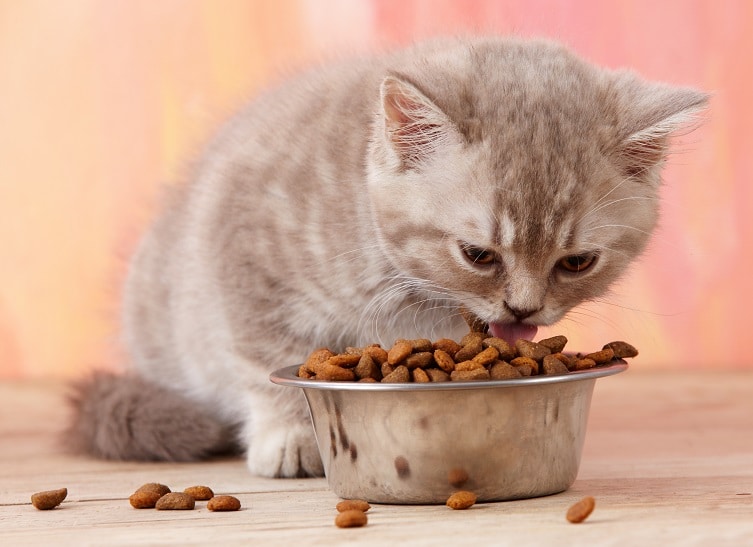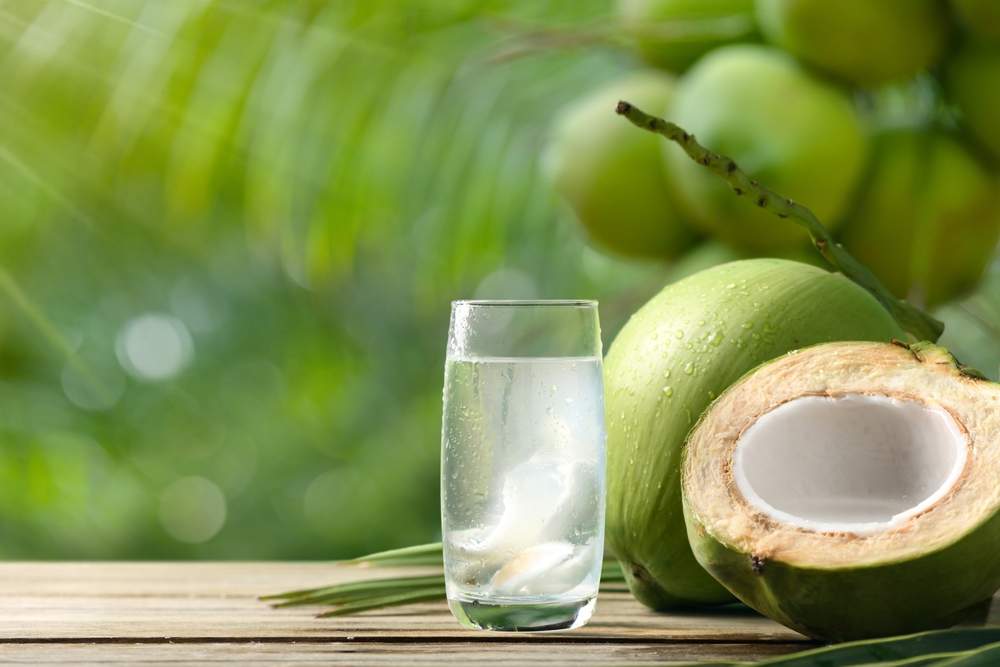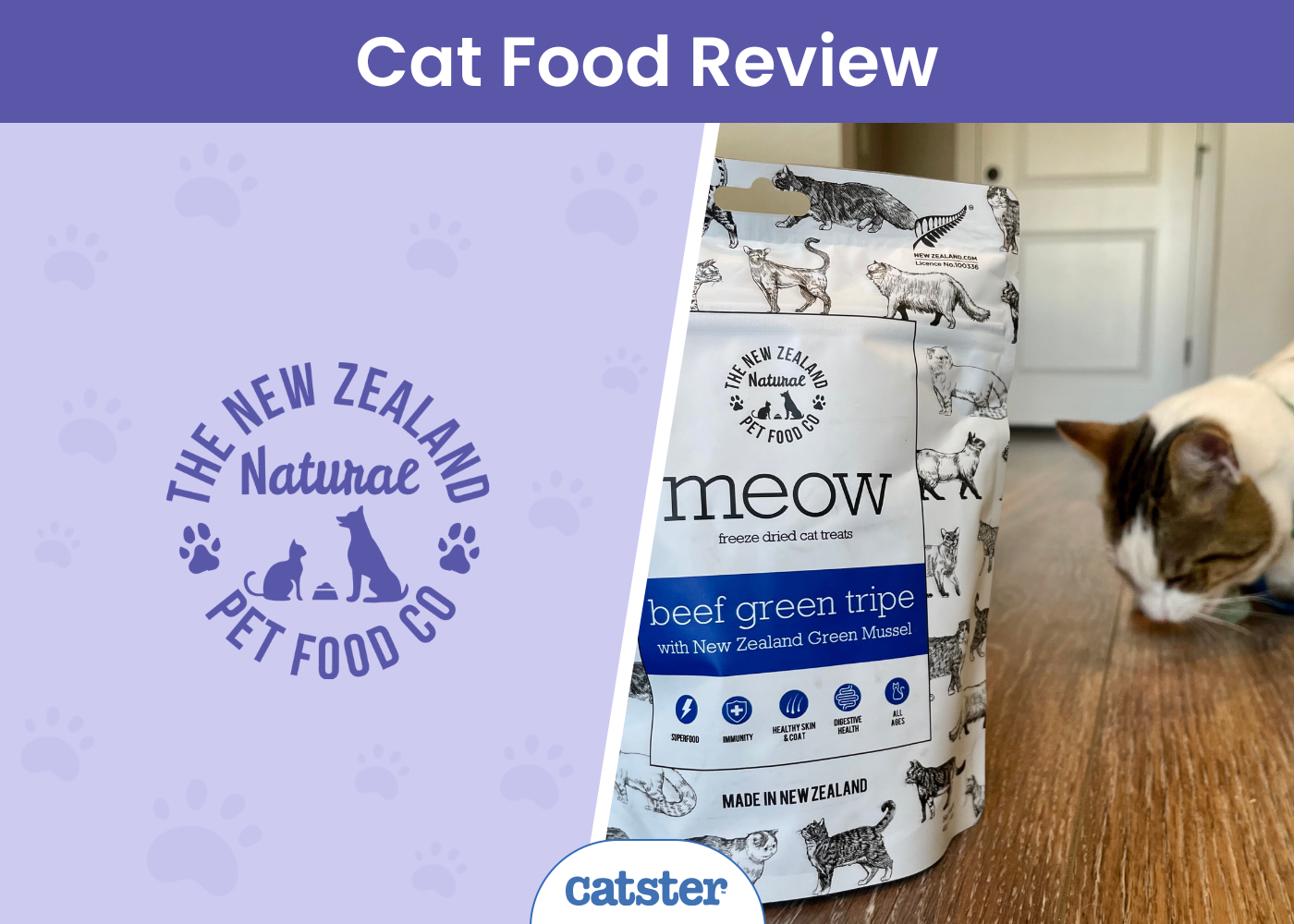Click to Skip Ahead
Kittens are some of the most adorable creatures on earth, and if you’ve recently adopted one, congratulations, and get ready for the time of your life! Now that your new buddy has arrived, you may be looking for tips to ensure they get everything they need to grow and thrive.
Kittens have different nutritional needs than grown-up cats. Their little bodies require more protein than adults, and they need specific vitamins and minerals to grow strong and healthy. They also benefit from food that’s higher in calories than what adult cats should consume.
What to Feed a Kitten
Kittens need to eat specially formulated food to meet their dietary needs. Look for brands with an Association of American Feed Control Officials (AAFCO) statement of nutritional adequacy and select products designated as appropriate for kittens.
Kitten food is available in wet and dry formulations. Wet food provides lots of moisture, which can help kittens stay hydrated. Proper hydration is critical for kittens’ kidney and urinary tract health. Cats love snacking on kibble, but it’s generally high in carbohydrates and can sometimes lead to weight gain.
Ask your veterinarian to review any brands you’re considering to ensure that whatever you give your cat is appropriate for their needs.

How Much Should Kittens Eat?
The exact amount kittens need to eat depends on their age, size, and the food they’re eating. Most kitten food comes with feeding guidelines on the packaging that pet parents can use to get a general idea of how much their pet should eat.
As a broad guideline, tiny kittens often consume between ¼ and ½ cups of food per meal. Your veterinarian can provide guidance regarding how much to feed your kitten to ensure they grow at an appropriate rate.
How to Feed a Kitten
Kittens younger than 6 months benefit from having free access to food; otherwise, they need to be fed multiple meals every day. Most need to eat every 4 to 6 hours to get all the energy they require to grow and fuel all their activity.
They can usually graduate to twice daily meals at some point when they’re between 4 and 6 months old, but check with your veterinarian before changing to ensure your kitten has reached the growth milestones they need to and can safely move on to a new feeding schedule.
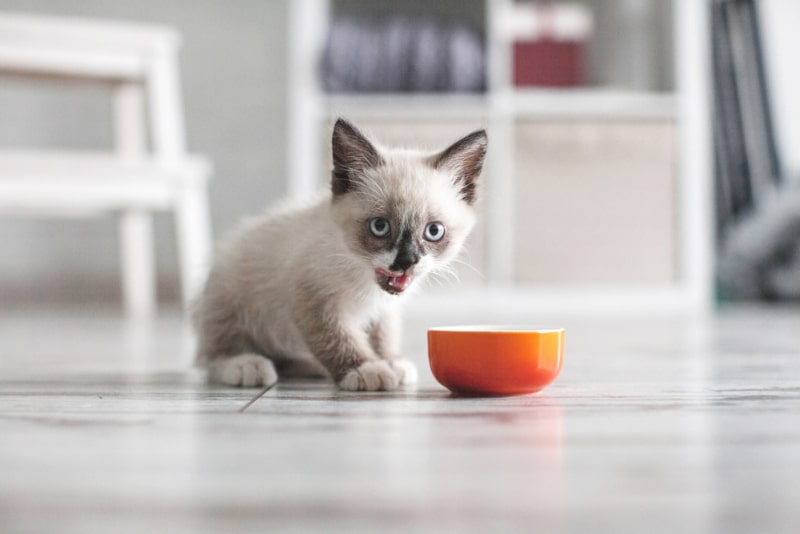
What Is Free Feeding?
Free feeding involves leaving dry food out all day and letting kittens snack at will. It allows hungry growing kitties with high energy to eat at any time. While it’s convenient and often a good choice for youngsters, the practice has disadvantages that kick in once they get older.
Some cats eat too much when allowed to dine whenever they choose. It’s also not always workable in homes with multiple pets since dogs and older cats may help themselves to your kitten’s food.
Measuring the amount of kibble kittens get when being free-fed is essential to ensure they’re not under or overfed and get precisely what they need to grow into healthy cats. Because wet food should be cleaned up pretty quickly after being served, it’s not a feasible free-feeding choice.
How Do Scheduled Meals Work?
Scheduled meals require more planning than free feeding, particularly when young kittens benefit from eating several meals per day. Although it generally takes a bit more time, the practice also has a few benefits.
Feeding kittens multiple times a day can help pet parents monitor how much their companion is eating. It’s generally a good option for multi-pet homes as it ensures kittens can eat peacefully. Wet food is an option, and it will enable you to add a bit more variety to your companion’s diet.
To ensure your kitten gets the right amount to eat, work with your veterinarian to come up with an approximate caloric intake goal, determine how much food that translates to (using the information on the kitten food packaging), and divide the portion according to the number of meals you’ll serve.
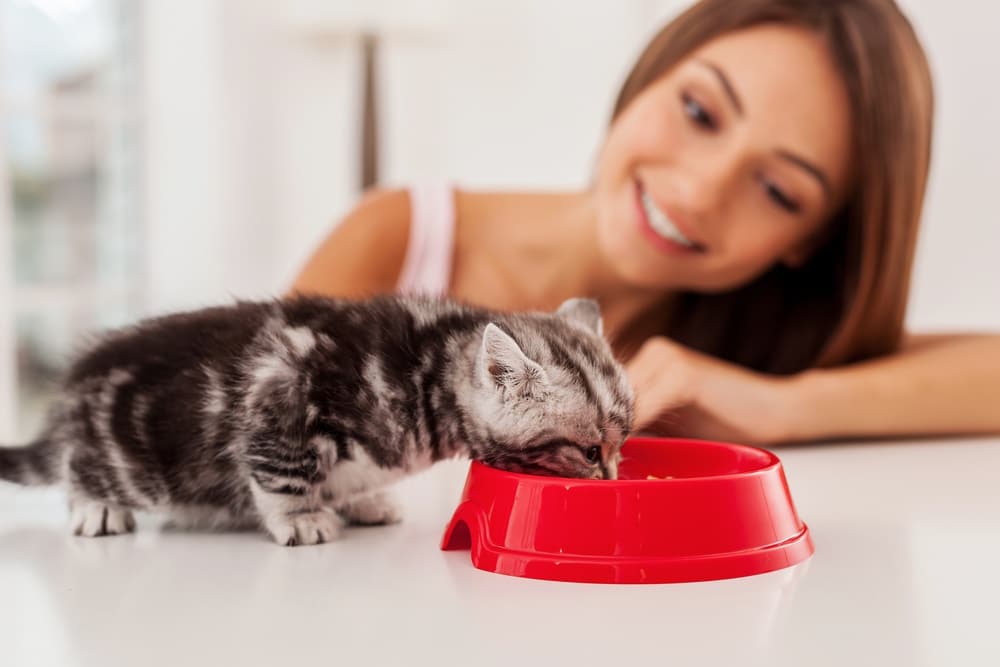
Frequent Asked Questions
How Much Weight Should Kittens Gain?
Most kittens should put on about 1 pound a month. When kittens are young, their weights frequently match their ages; 2-month-old kittens often weigh around 2 pounds. The pattern usually holds true until kittens reach 4 or 5 months old.
When Can Kittens Transition to Adult Food?
Most kittens are ready to switch to regular adult cat food when they’re around 1 year old. Some cats take longer to reach adulthood, such as Maine Coons, and need to eat kitten food for a bit longer than smaller cats.
You can speak to your veterinarian before switching your cat to adult food to ensure the timing is right and their body is ready to make the transition.
What Are Interactive and Puzzle Feeders?
Interactive games and puzzle feeders are products designed to slow cats down and make them work a bit for their food. They provide entertainment and mental stimulation while encouraging cats to use their natural physical abilities to find things they like (treats and food).
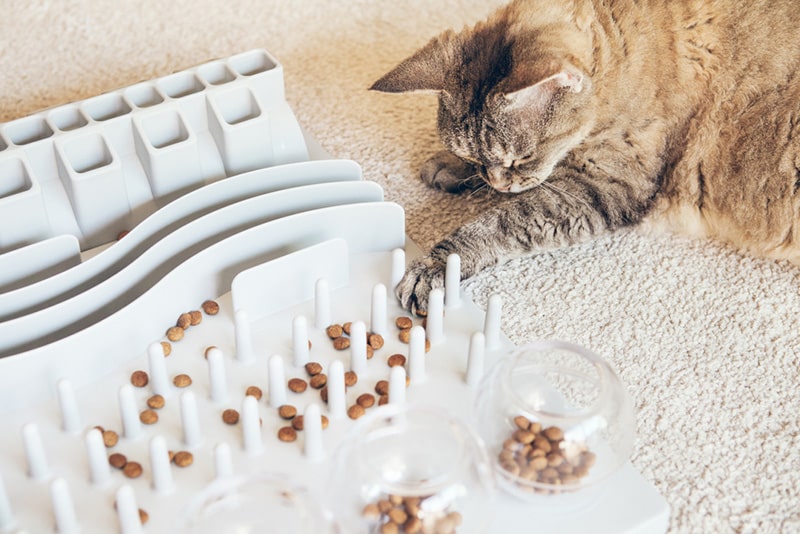
Conclusion
Kittens generally require several daily meals to keep their growing bodies fueled and ready to go. Most need to stick with kitten food formulations until they’re about one year old or so. Young kittens need free access to food or to be fed multiple meals per day.
You can contact your veterinarian before changing your cat’s food or feeding schedule to ensure the time is right for the transition.
Featured Image Credit: shutterstock, MaraZe

